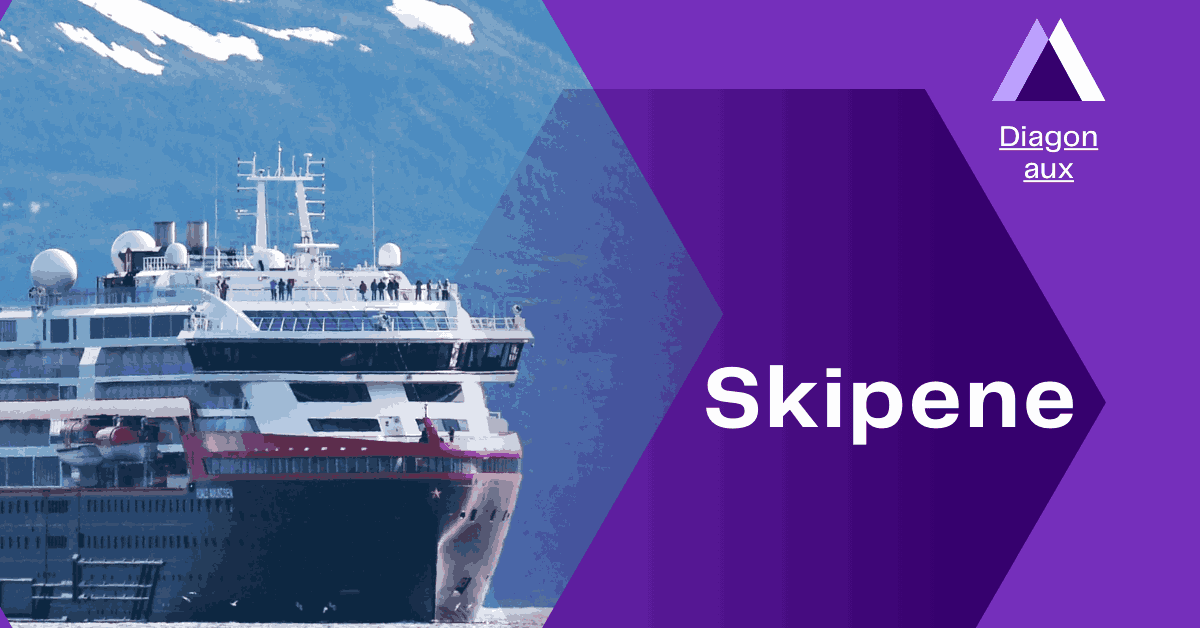Skipene – Industrial Revolution and Technological Advancements
Embarking on a journey through the annals of maritime history, one encounters a term that resonates with the essence of seafaring adventures – “skipene”.
In the Norwegian language, “skipene” translates to “the ships”, symbolizing the rich maritime heritage that has shaped civilizations, economies, and cultures across the globe.
From ancient vessels to modern marvels, the story of “skipene” is a captivating saga of innovation, exploration, and trade.
Origins and Evolution
The evolution of “skipene” traces back to the dawn of human civilization when early seafarers crafted primitive vessels to traverse waterways for fishing and transportation.

Over millennia, advancements in shipbuilding techniques, materials, and navigation spurred the development of diverse ship types, each tailored to specific purposes and environments.
From the iconic longships of the Vikings to the majestic tall ships of the Age of Exploration, the evolution of “skipene” mirrors the evolution of human ingenuity and ambition on the high seas.
The Golden Age of Exploration
The Renaissance period witnessed a surge in maritime exploration driven by the pursuit of new trade routes, territories, and knowledge.
“Skipene” played a pivotal role in this epochal era of discovery, as intrepid sailors set sail across uncharted waters, mapping coastlines, and establishing global trade networks.
Also Read; https://infomania.space/aplicaciones-para-ganar-dinero/80/2021/
Iconic voyages aboard ships like the Santa Maria, the Mayflower, and the Endeavour reshaped the world map and ignited the age of globalization, forever altering the course of history.
Industrial Revolution and Technological Advancements
The advent of the Industrial Revolution heralded a new era of shipbuilding characterized by mechanization, standardization, and mass production.
Steam-powered vessels revolutionized maritime transportation, enabling faster and more reliable journeys across oceans.

The transition from sail to steam marked a paradigm shift in “skipene” design and functionality, paving the way for innovations such as ironclads, steamships, and eventually, the modern merchant fleets and naval armadas that dominate the seas today.
The Role of “Skipene” in Global Trade
As conduits of commerce and cultural exchange, “skipene” have been instrumental in facilitating global trade throughout history.
From the bustling ports of ancient empires to the modern-day shipping lanes of container vessels, ships have served as lifelines connecting distant shores and fueling economic prosperity.
Also Read: https://multigrafico.com/khalil-chishtee-no-todo-el-arte-es-belleza/
The rise of maritime trade routes such as the Silk Road, the Spice Route, and the Transatlantic Slave Trade underscore the pivotal role of “skipene” in shaping the dynamics of global commerce and cultural diffusion.
Environmental and Ethical Considerations
While “skipene” have been integral to human progress and prosperity, they also pose significant environmental and ethical challenges.
The shipping industry accounts for a substantial portion of global carbon emissions and marine pollution, raising concerns about its impact on marine ecosystems and climate change.
Additionally, issues such as maritime piracy, human trafficking, and labor exploitation highlight the ethical complexities associated with the global shipping industry, calling for greater transparency, accountability, and sustainability in “skipene” operations.
Conclusion: Navigating the Seas of Change
In conclusion, the legacy of “skipene” is a multifaceted tapestry woven with threads of exploration, trade, technology, and cultural exchange.
From humble beginnings as wooden vessels to the towering behemoths of modern maritime commerce, ships have been catalysts for human progress and interconnectedness on a global scale.
ALso Read: 323-544-7087 – Former boxer Amir Khan’s wife Threatened
As we navigate the seas of change in the 21st century, it is imperative to cherish and steward the legacy of “skipene” with foresight, innovation, and a commitment to sustainability, ensuring that future generations can continue to embark on voyages of discovery and enlightenment across the world’s oceans.
FAQs
1. What are the different types of “skipene”?
“Skipene” encompass various types, including cargo ships, passenger vessels, naval warships, fishing boats, and luxury yachts.
2. How do ships navigate across oceans?
Ships navigate using a combination of navigational tools such as GPS, radar, compasses, and nautical charts, along with celestial navigation techniques.
3. What is the environmental impact of “skipene”?
“Skipene” contribute to marine pollution and greenhouse gas emissions, prompting efforts to adopt eco-friendly technologies and sustainable practices.
4. How has technology transformed shipbuilding?
Technology has revolutionized shipbuilding with innovations like computer-aided design (CAD), automated manufacturing processes, and advanced materials such as fiberglass and carbon fiber.
5. What role did “skipene” play in historical trade routes?
“Skipene” were instrumental in establishing and sustaining historical trade routes such as the Silk Road, the Spice Route, and the Triangular Trade, facilitating global commerce and cultural exchange.
6. How has piracy impacted maritime trade?
Piracy has historically disrupted maritime trade routes, leading to increased security measures and international cooperation to combat piracy in regions such as the Gulf of Aden and the Strait of Malacca.
7. What ethical issues are associated with the shipping industry?
The shipping industry grapples with ethical concerns such as human trafficking, labor exploitation, and environmental degradation, prompting calls for greater accountability and sustainability in maritime operations.


